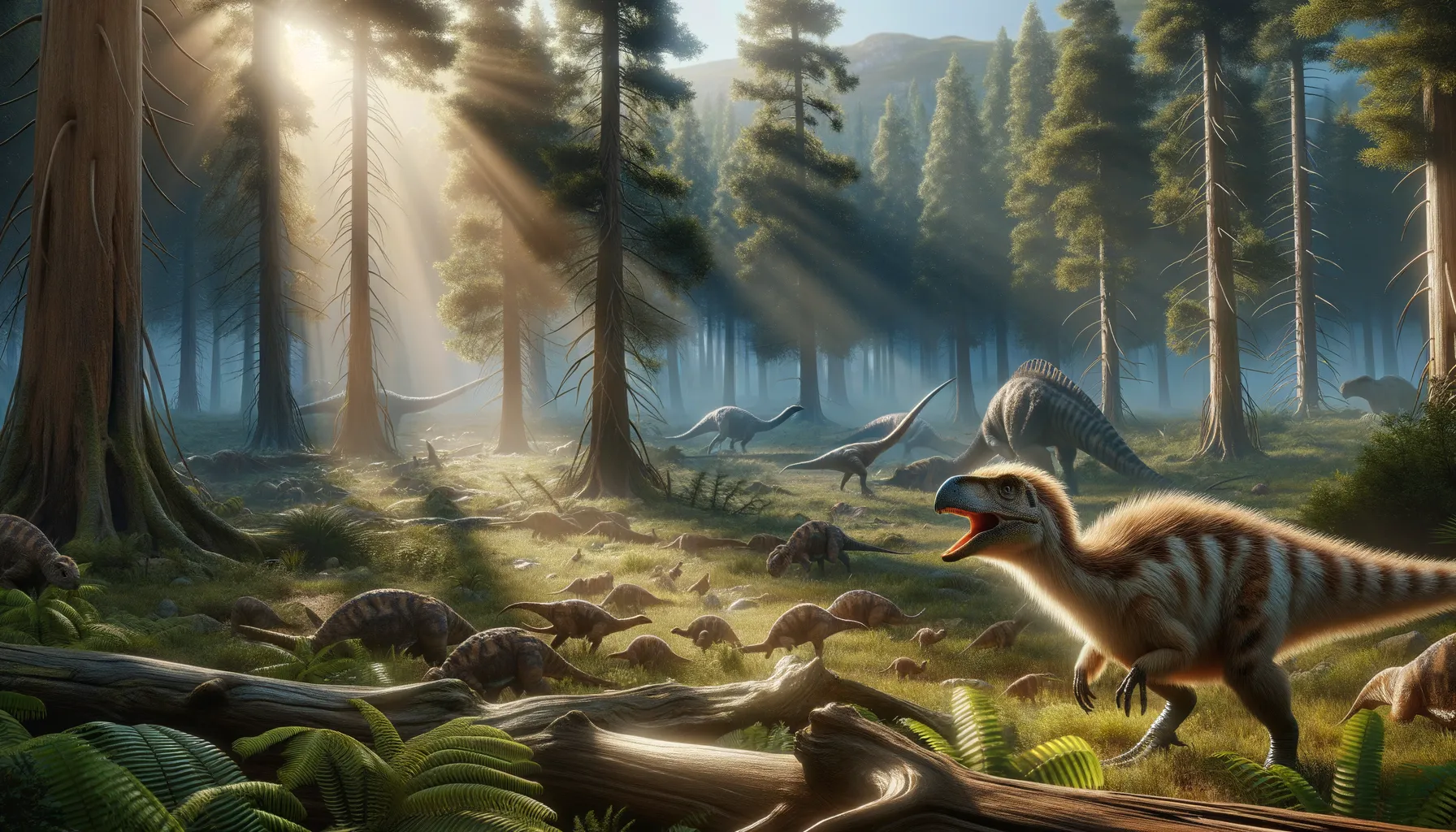
Albertavenator
Small, smart, and swift predator!
Period
Cretaceous
Length
Roughly 2 meters long.
Height
Approximately 1.5 meters tall.
Weight
Around 50 to 100 kilograms.
Albertavenator, closely related to Troodon, was a small, bird-like dinosaur that roamed what is now North America during the Late Cretaceous period. Known for its quick reflexes and sharp intellect, it was a predator adept at hunting smaller animals. Albertavenator's discovery has added to the understanding of the diverse dinosaur ecosystem that existed in the region. With fossil evidence found in Alberta, it is crucial to piecing together the ancient ecological puzzle of the time.
Diet
Albertavenator was likely an omnivore, feeding on small animals and possibly plants. Its diet might have included mammals, insects, and small reptiles, capitalizing on the variety of potential prey in its environment.
Hunting
This dinosaur probably hunted in a swift and calculating manner, utilizing its agility to capture small prey. It might have used keen senses to detect and ambush its targets, making it an efficient predator despite its small size.
Environmental challenges
Living during the Late Cretaceous, Albertavenator faced challenges from climatic changes and competitions for resources. As a smaller dinosaur, it also needed to avoid becoming prey for larger predators. The ever-changing environment required adaptability in both hunting tactics and diet to ensure survival.
Speed
Likely quick and agile due to its size.
Lifespan
Estimated around 10 to 15 years.
First discovery
Discovered in Alberta, Canada, in 2017.
Fun Facts
- Albertavenator was a small theropod dinosaur that lived about 71 million years ago during the Late Cretaceous period.
- Its name means 'Hunter from Alberta,' as it was discovered in the Canadian province of Alberta.
- Albertavenator was part of the same family as the famous Velociraptor, though it was smaller in size.
- This dinosaur is believed to have been a fast and agile predator, likely hunting small animals and insects.
- Albertavenator is known from a partial skull, making it a bit of a mystery in terms of its full appearance.
- This dinosaur was a feathered creature, adding to its bird-like characteristics.
- It represents an important part of understanding the diversity of theropod dinosaurs in North America.
Growth and Development
Albertavenator likely experienced rapid growth in its early stages to reach maturity quickly. This fast development would allow it to fend for itself in a world with many larger predators. Juveniles might have stayed in groups to enhance their survival rates during these vulnerable years.
Habitat
Albertavenator lived in a diverse ecosystem with forests, rivers, and open plains. These environments provided ample food opportunities and hiding spots from predators. It likely adapted to shifting landscapes as the environment changed through climatic influences.
Interaction with other species
As a smaller predatory dinosaur, Albertavenator might have coexisted with both other smaller species and larger carnivorous dinosaurs. It may have scavenged on carcasses left by larger predators, avoiding direct competition. In its ecosystems, it contributed to a complex food web.
Natural lifespan
Albertavenator likely had a natural lifespan similar to other small dinosaurs.
Reproduction
Like other theropods, Albertavenator probably laid eggs and might have cared for its young in some capacity. The reproductive strategy would ensure that many offspring had a chance to reach maturity.
Social behaviour
Albertavenator could have been social to some extent, benefiting from group dynamics for protection or hunting cooperation. Alternatively, it might have been a solitary hunter, focusing on stealth and surprise in its predatory habits.
Fossil locations
Fossils of Albertavenator have primarily been found in Alberta, Canada. This region provides rich insight into the diversity of dinosaur species existing during the Late Cretaceous period. The findings contribute significantly to the knowledge of dinosaur ecosystems in North America.
